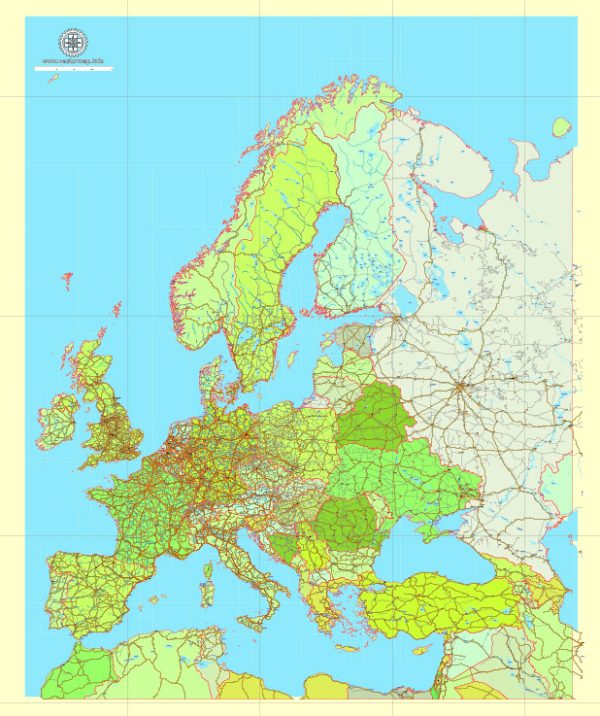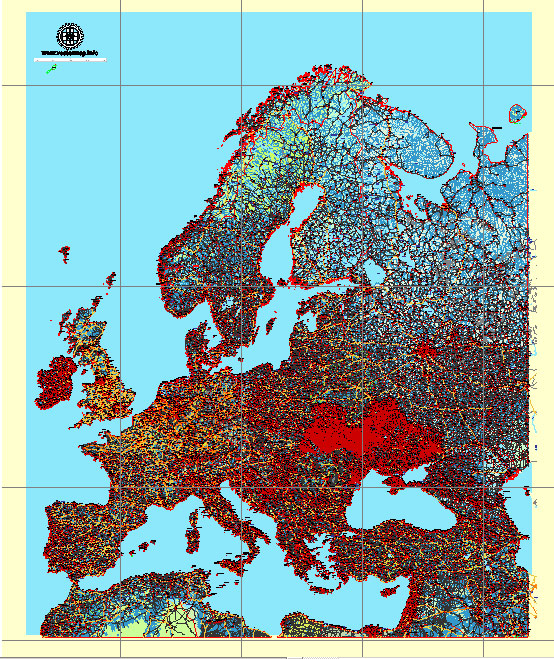The history of cartography in Europe is a rich and fascinating journey that spans centuries. Here is an overview of key developments and figures in the history of European cartography:
- Ancient and Medieval Cartography:
- Ancient Greece: Early Greek scholars like Anaximander and Hecataeus of Miletus made some of the first known maps, often based on mythological and anecdotal information.
- Roman Empire: The Romans created maps for administrative and military purposes. The most famous example is the Tabula Rogeriana, created by the Muslim cartographer Al-Idrisi for King Roger II of Sicily in the 12th century.
- Renaissance Cartography:
- The Renaissance period in Europe saw a revival of interest in geography and cartography. Ptolemy’s “Geographia” was rediscovered and translated, influencing mapmaking in this era.
- Claudius Ptolemy’s work greatly influenced European cartography, leading to the production of more accurate world maps, atlases, and globes.
- Age of Exploration:
- During the Age of Exploration, European explorers like Christopher Columbus, Vasco da Gama, and Ferdinand Magellan undertook voyages to explore and map new lands. These explorations resulted in the creation of more accurate world maps.
- Martin Waldseemüller, a German cartographer, produced a world map in 1507 that was one of the first to label the New World as “America” in honor of Amerigo Vespucci.
- Early Modern Mapping:
- The 16th and 17th centuries saw advancements in cartography with the work of Gerardus Mercator, who introduced the Mercator projection, which greatly improved navigation.
- Maps were often adorned with decorative elements and illustrations during this period, and they played a significant role in conveying power and prestige.
- National Mapping Agencies:
- In the 19th century, many European countries established national mapping agencies to systematically map their territories. For example, the Ordnance Survey in the United Kingdom and the Institut Géographique National in France were founded during this time.
- Modern Cartography:
- The 20th century brought significant advancements in cartography, with the development of topographic mapping and the use of aerial and satellite imagery to create more accurate and detailed maps.
- The digital age has revolutionized cartography, with Geographic Information Systems (GIS) enabling the creation of dynamic, interactive maps that can be customized for various purposes.
- Contemporary Cartography:
- In the 21st century, cartography has continued to evolve, with the rise of online mapping services like Google Maps and the development of 3D and augmented reality maps.
- Advances in satellite technology, GPS, and open-source mapping platforms have democratized mapmaking and made geographic information widely accessible.
European cartography has had a profound impact on our understanding of the world and has been closely tied to the history of exploration, navigation, and the development of geographic knowledge. It continues to play a crucial role in various fields, from geography and urban planning to disaster management and environmental conservation.



 Author: Kirill Shrayber, Ph.D.
Author: Kirill Shrayber, Ph.D.